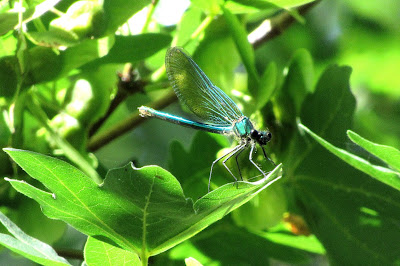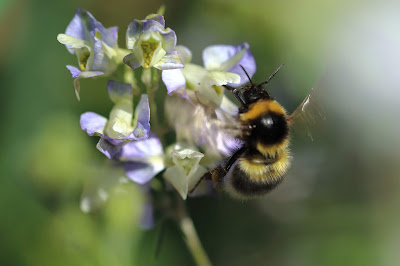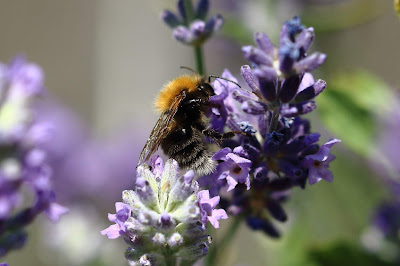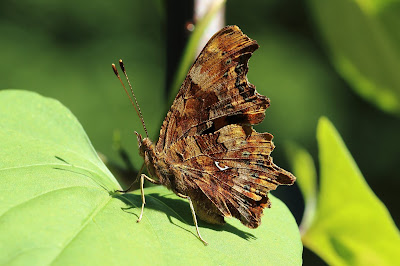Sightings and news for the Naturewatch group of Great and Little Abington in Cambridgeshire, UK. See below for more details and information on how to join.
Saturday, 21 July 2018
Comma butterfly in High Street
Wednesday, 18 July 2018
Monday, 16 July 2018
Butterfly and Flora walk on Roman Road, Saturday 14 July
This is the list of butterflies that we saw:
- Brimstone
- Large White
- Small White
- Green Veined White
- Meadow Brown
- Gatekeeper
- Ringlet
- Common Blue
- Small Skipper
Derek and Peter took a few photos:
 |
| Common Blue |
 |
| Common Blue |
 |
| Ringlet |
 |
| Meadow Brown |
- Parsnip
- Field Scabious
- Small Scabious
- Spear Thistle
- Curled Dock
- Dog Rose
- Dark Mullein
- Common Mallow
- Geranium
- Dead Nettle
- Common Ragwort
- Yarrow
- Knapweed
- Knapweed [rayed form]
- Great Knapweed
- Ladies bedstraw
- Hedge bedstraw
- St John's Wort
- Wild Carrot
- Field Bindweed
- Hedge Bindweed
- Mugwort
- Wild Mignonette
- Weld
- Black Horehound
- Herb Robert
- Lucerne
- Rough Chervil
- Restharrow
- Bladder Campion seed heads
- Rock Rose
- Goat's Beard seed heads
Sunday, 15 July 2018
Wildlife, notably dragonflies, on Cambridge Road
Interesting sightings in the on the garden pond. First I saw a slightly bedraggled Whiteletter Hairstreak. Then a Southern Hawker, an Azure Damselfly and a Banded Demoiselle. I think this is only the second time we have seen a Banded Demoiselle in the garden.
 |
| Azure Damselfly |
 |
| Banded Demoiselle |
Sunday, 8 July 2018
Granta Park wildlife
Alongside the lake, a number (maybe 10-20) skimmer dragonflies were living up to their name - skimming just above the water, as well as resting occasionally on the damp lake edge - like this Black-tailed Skimmer. Note the yellow spots on the side of the abdomen, and golden-coloured 'costa' or front wing edge (thanks Darren!)
More 'bathroom' moths
Tuesday, 3 July 2018
Southern Hawker in Church Lane
Their garden is full of many different butterflies and bees with at least 4 large white, & 4 small tortoiseshell butterflies.
Monday, 2 July 2018
Birds and Bees and Butterflies
The Aims of Abington Naturewatch
At their meeting on 9 April 2005 the members approved this revised version of the aims of Abington Naturewatch:
- To monitor and record the wildlife (fauna & flora) within the borders of the Abingtons;
- To encourage protection of our wildlife, maintain its quality and foster its diversity;
- To promote awareness of the richness, potential and problems of the natural environment of the Abingtons;
- To cooperate in improving access to the local natural environment for the benefit of all Abington villagers.
The organisation is informal and communication is by email if possible; members are notified of events from time to time. Contact details are maintained by a small "project team". There is currently no membership fee as costs are covered by voluntary contributions at events.
Members are encouraged to report notable sightings of flora and fauna within the Abingtons to the appropriate sector coordinator and an illustrated record is published annually.
A map of the area covered, with some features noted, is available here: http://maps.google.co.uk/maps/ms?ie=UTF8&hl=en&msa=0&msid=213774935674882866424.00000111dca2be9f06ab8&z=13>
For more information or to join, please contact David Farrant on (01223) 892871.
Contributions to our records should be sent to sector contacts or either of the above. Photographs may also be submitted to Andy Merryweather (amerryweather61@gmail.com)





































